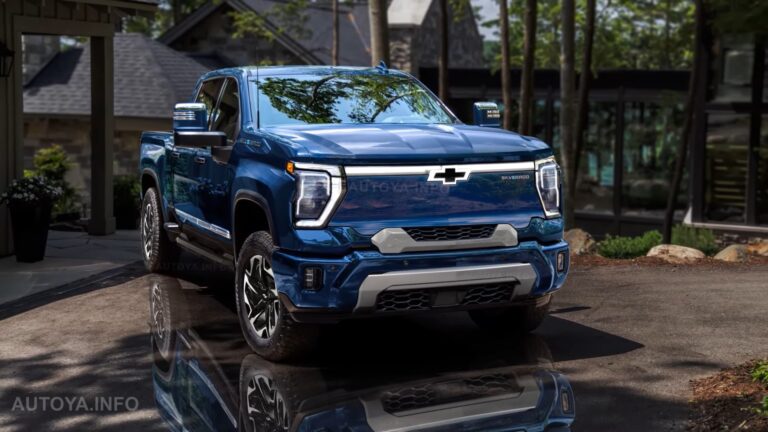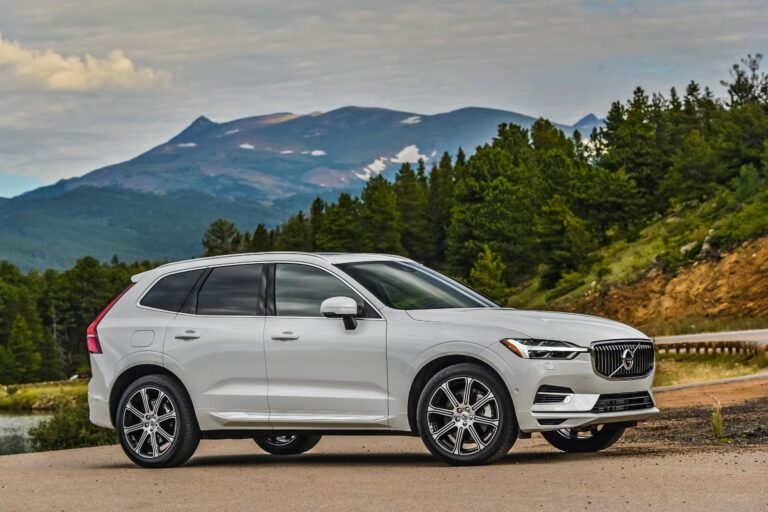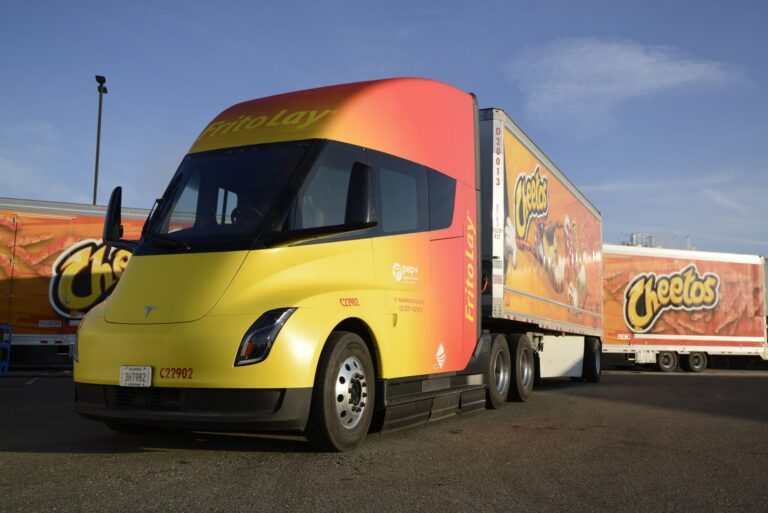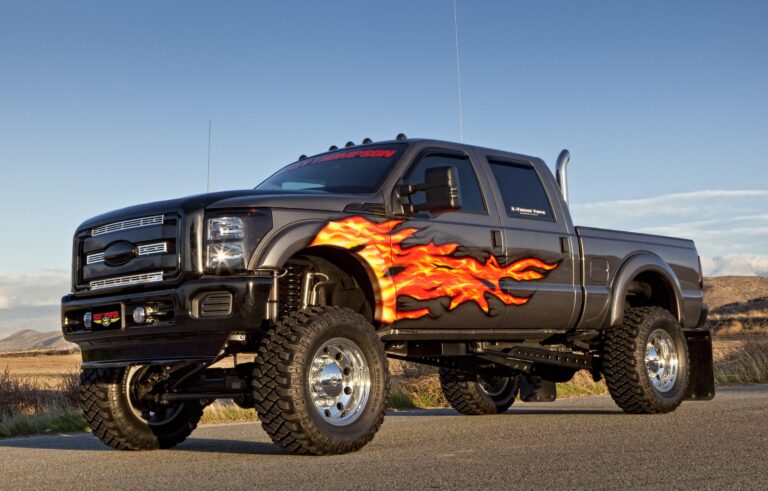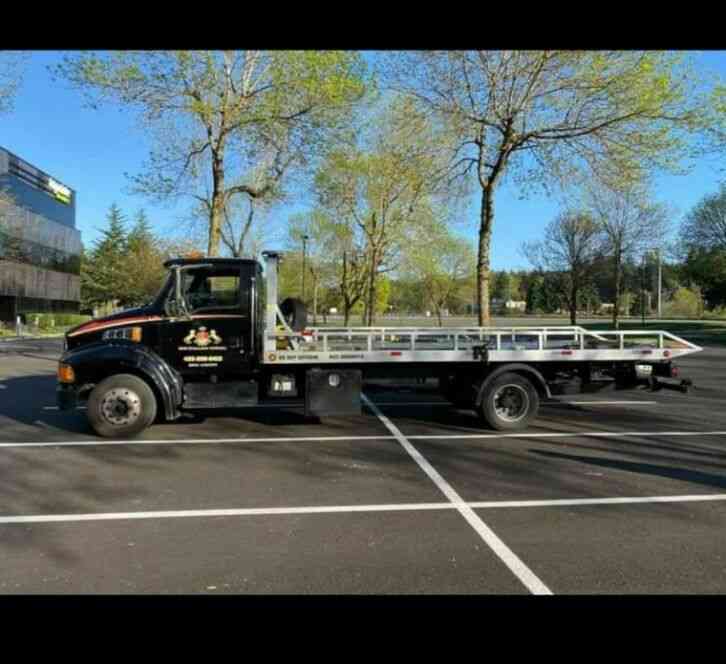Old Chevy Trucks For Sale: Your Comprehensive Guide to Finding, Buying, and Owning a Classic American Icon
Old Chevy Trucks For Sale: Your Comprehensive Guide to Finding, Buying, and Owning a Classic American Icon cars.truckstrend.com
In the vast landscape of automotive desires, few vehicles hold the enduring appeal and cultural significance of an old Chevy truck. More than just a means of transport, these venerable machines represent a tangible slice of American history, a testament to robust engineering, and a blank canvas for personalization. For many, the phrase "Old Chevy Trucks For Sale" isn’t just a search query; it’s the gateway to a passion, a project, or the realization of a lifelong dream.
This comprehensive guide delves deep into the world of classic Chevrolet pickups, offering insights for both seasoned enthusiasts and curious newcomers. We’ll explore why these trucks continue to captivate, what to look for when buying, where to find them, and the essential considerations that transform a simple purchase into a rewarding ownership experience.
Old Chevy Trucks For Sale: Your Comprehensive Guide to Finding, Buying, and Owning a Classic American Icon
Why Buy an Old Chevy Truck? The Enduring Appeal
The allure of an old Chevy truck is multifaceted, drawing in a diverse crowd ranging from mechanics and restorers to collectors and everyday drivers seeking something unique.
- Nostalgia and Classic Aesthetics: There’s an undeniable charm in the lines and curves of a bygone era. From the rounded fenders of the ’50s Task Force models to the iconic "square body" C/K series of the ’70s and ’80s, each generation boasts a distinctive design that evokes a sense of simpler times and rugged capability.
- Durability and Reliability: Built during an era when vehicles were designed to be worked hard and last, many old Chevy trucks are testament to robust construction. Simple, straightforward mechanicals mean fewer complex systems to fail, contributing to their legendary reliability.
- Simplicity of Mechanics: Unlike modern vehicles laden with complex electronics and proprietary software, older Chevy trucks often feature easily accessible and understandable mechanical components. This makes them ideal for DIY enthusiasts, offering a rewarding learning curve and often more affordable repairs.
- Investment Potential: While not every old truck will become a high-value collector’s item, well-maintained or professionally restored examples, particularly popular models from the late ’60s and early ’70s, have shown consistent appreciation in value. They can be a tangible asset that also provides immense enjoyment.
- Customization Canvas: An old Chevy truck is the ultimate blank slate. Whether you envision a show-stopping hot rod, a lifted off-road beast, a slammed street cruiser, or a period-correct restoration, the aftermarket support and community knowledge allow for endless possibilities.
- Community and Culture: Owning an old Chevy truck connects you to a vibrant community of fellow enthusiasts. Car shows, online forums, and local clubs provide a platform for sharing knowledge, finding parts, and celebrating a shared passion.

Key Eras and Iconic Models: A Buyer’s Guide
Chevrolet’s truck lineage is rich and varied. Understanding the different eras and their defining models is crucial for narrowing down your search and appreciating what each offers.
- Pre-War & Early Post-War (1920s-1954): These early trucks, often referred to by their "stovebolt" inline-six engines, are true pieces of history. The Advance-Design (1947-1955 First Series) 3100 series trucks are particularly iconic, known for their curvaceous styling and practical utility. Finding these in good condition can be challenging, and they often command higher prices for fully restored examples.
- Task Force (1955-1959): A significant leap forward in design and engineering, the Task Force trucks introduced a more modern aesthetic. Models like the Cameo Carrier (an early luxury pickup) and the more common Apache are highly sought after for their distinctive styling, wrap-around windshields, and available V8 engines.
- C/K Series (1960-1966): This generation introduced independent front suspension, improving ride quality. Their unique "eyebrow" hood design is a defining characteristic. These are solid choices for those looking for a slightly more modern feel without sacrificing classic charm.
- C/K Series (1967-1972) "Action Line": Arguably the most popular and desirable generation among collectors and customizers. The clean lines, balanced proportions, and wide availability of parts make these C10s (2WD) and K10s (4WD) perfect candidates for everything from full restorations to high-performance restomods. Their demand ensures strong resale value.
- C/K Series (1973-1987) "Square Body": These trucks are known for their rugged, no-nonsense styling and incredible durability. While once overlooked, "Square Body" trucks are rapidly gaining popularity due to their affordability, vast aftermarket support, and classic ’80s aesthetic. They make excellent daily drivers or project trucks.
- Later Models (1988-early 2000s) "OBS" (Old Body Style): While perhaps not "old" in the same vein as a ’67, the 1988-1998 C/K series trucks (often called OBS for Old Body Style) are quickly becoming modern classics. They offer more modern comforts, fuel injection, and reliable powertrains at a generally lower entry price, making them great starting points for custom builds.


Where to Find Your Dream Old Chevy Truck
The hunt for an old Chevy truck can be as exciting as owning one. Here’s where to cast your net:
-
Online Marketplaces:
- eBay Motors: Great for a wide range of trucks, from basket cases to fully restored. Be wary of descriptions and always ask for more photos/videos.
- Craigslist & Facebook Marketplace: Excellent for local finds, often from private sellers. Prices can be more negotiable, but scams are prevalent – always inspect in person.
- ClassicCars.com, Hemmings, AutoTrader Classics: Reputable sites specializing in classic vehicles, often listing higher-quality or professionally restored trucks.
- Specialized Forums & Facebook Groups: Many year-specific or model-specific groups (e.g., "1967-72 C10 Trucks") have classified sections where enthusiasts sell their vehicles.
-
Specialized Dealerships/Brokers: These businesses focus solely on classic vehicles. While prices might be higher, you often get a vetted vehicle, potential warranties, and financing options.
-
Auctions: Major auctions like Mecum and Barrett-Jackson feature high-end, professionally restored trucks, often fetching premium prices. Local estate or farm auctions can yield surprising "barn finds."
-
Car Shows & Swap Meets: Great places to see trucks in person, talk to owners, and network. Many sellers don’t list online but prefer to sell by word of mouth.
-
Word of Mouth/Local Classifieds: Don’t underestimate the power of local connections. Let friends, family, and local mechanics know you’re looking.
What to Look For: Essential Inspection Checklist
Buying an old vehicle requires a thorough inspection. A few hours of due diligence can save you thousands in future repairs.
- Rust: This is the ultimate enemy. Check common rust spots:
- Frame: Inspect the entire frame for cracks, bends, or significant corrosion.
- Cab: Rocker panels, cab corners, floor pans, firewall, drip rails.
- Bed: Bed floor, inner and outer wheel wells, bed sides.
- Fenders & Doors: Lower sections, around headlights/taillights.
- Mounting Points: Body mounts, suspension mounts.
- Tip: Bring a small magnet. If it doesn’t stick, it could indicate thick bondo.
- Engine & Drivetrain:
- Leaks: Oil, coolant, transmission fluid.
- Sounds: Listen for knocking, ticking, or grinding.
- Smoke: Blue (oil), white (coolant), black (fuel).
- Transmission: Smooth shifting (automatic), clutch feel and gear engagement (manual).
- Differential: Listen for humming or clunking.
- Suspension & Steering:
- Check for worn ball joints, tie rods, bushings.
- Excessive play in the steering wheel.
- Uneven ride height or sagging.
- Brakes:
- Pedal feel (spongy or hard).
- Pulling to one side.
- Listen for grinding or squealing.
- Electrical System:
- Test all lights (headlights, taillights, turn signals, brake lights).
- Check gauges, wipers, horn, heater/AC (if equipped).
- Look for frayed wires or amateur wiring jobs.
- Interior:
- Seat condition, dashboard cracks, door panel wear, headliner integrity.
- Functionality of windows, door latches.
- Body Panels & Paint:
- Check for consistent panel gaps.
- Look for signs of previous bodywork, ripples, or poor paint jobs.
- Match paint colors across panels.
- Documentation:
- Verify the VIN on the title matches the truck.
- Look for maintenance records, original build sheets, or receipts for work done.
- Test Drive:
- Listen for unusual noises.
- Feel for vibrations, pulls, or rough shifting.
- Check brake effectiveness.
- Assess steering response and stability.
Consider hiring a pre-purchase inspector specializing in classic vehicles if you’re not confident in your own assessment.
Restoration vs. Preservation vs. Customization: Understanding Your Options
Before you buy, decide what kind of owner you want to be.
- Full Restoration (Concours Quality): Aiming to bring the truck back to its original factory condition, often exceeding it. This is expensive, time-consuming, and requires meticulous attention to detail and original parts. Ideal for collectors.
- Driver Quality/Partial Restoration: Making the truck mechanically sound, safe, and presentable, but not necessarily flawless. This is a more attainable goal for many, allowing you to enjoy the truck without constant worry about every scratch.
- Preservation/Survivor: Keeping the truck as original as possible, embracing its "patina" (natural wear and tear). This approach values authenticity and history over perfection.
- Restomod: Combining classic looks with modern performance, comfort, and safety features (e.g., modern engine, transmission, brakes, AC). This is a very popular option for those who want to daily drive or cruise their classic truck.
- Hot Rod/Custom Build: Significant modifications to appearance and performance, often for show or drag racing. This is where creativity knows no bounds.
Budgeting for Your Old Chevy Truck: Beyond the Purchase Price
The sticker price is just the beginning. Factor in these additional costs:
- Purchase Price: Varies wildly based on model, year, condition, and rarity.
- Transportation/Shipping: If buying out of state.
- Insurance: Classic car insurance is often more affordable than standard insurance but has specific requirements (e.g., limited mileage, secure storage).
- Registration & Taxes: Standard vehicle ownership costs.
- Immediate Repairs/Maintenance: Even a "driver" will likely need fluids, tune-up, or minor repairs.
- Planned Upgrades/Restoration Costs: Parts, paint, bodywork, engine work, interior, labor if you’re not doing it yourself. This can easily exceed the purchase price.
- Tools: If you plan on doing your own work.
- Storage: Secure, dry storage is crucial to prevent rust and damage.
- Contingency Fund: Always budget for unexpected issues.
Challenges and Solutions
Owning an old Chevy truck isn’t without its hurdles, but most have straightforward solutions.
- Rust: The biggest challenge. Solution: Thorough pre-purchase inspection. If buying a rusty project, budget for professional rust repair or learn welding and bodywork yourself. Reproduction body panels are widely available for popular models.
- Parts Availability: For popular models (like ’67-’72 C10s or Square Bodies), parts are abundant, both new reproduction and used. For older or rarer models, finding NOS (New Old Stock) or good used parts can be a scavenger hunt. Solution: Utilize online forums, swap meets, and specialized suppliers.
- Mechanical Issues: Old vehicles break down. Solution: Learn basic mechanics, invest in a good service manual, or find a reputable mechanic specializing in vintage vehicles. Many parts are relatively simple to replace.
- Cost Overruns: Projects can quickly spiral out of control. Solution: Set a realistic budget, prioritize repairs, and consider tackling the project in phases.
- Fraud/Scams: Especially prevalent in online marketplaces. Solution: Never buy sight-unseen. Always verify the seller, vehicle, and title in person. If it seems too good to be true, it probably is.
Estimated Price Table for Old Chevy Trucks For Sale
Please note: These prices are highly variable and depend on numerous factors including specific model, engine, transmission, originality, documentation, geographic location, and market demand. They are rough estimates for 2024.
| Year Range | Iconic Model(s) | Condition: "Project" (needs extensive work) | Condition: "Driver" (runs, drives, needs TLC) | Condition: "Restored/Show Quality" (excellent) |
|---|---|---|---|---|
| 1947-1954 | Advance-Design 3100 | $5,000 – $15,000 | $15,000 – $35,000 | $40,000 – $80,000+ |
| 1955-1959 | Task Force (Apache, Cameo) | $6,000 – $20,000 | $20,000 – $45,000 | $50,000 – $100,000+ |
| 1960-1966 | C/K Series (Early) | $4,000 – $15,000 | $15,000 – $30,000 | $35,000 – $70,000+ |
| 1967-1972 | C/K Series (Action Line) | $8,000 – $25,000 | $25,000 – $60,000 | $65,000 – $150,000+ |
| 1973-1987 | C/K Series (Square Body) | $3,000 – $12,000 | $10,000 – $30,000 | $35,000 – $75,000+ |
| 1988-1998 | OBS C/K Series | $2,000 – $8,000 | $8,000 – $25,000 | $30,000 – $60,000+ |
Note: Custom builds and highly modified trucks can fall outside these ranges, often fetching significantly higher prices depending on the quality of work and components.
Frequently Asked Questions (FAQ)
Q: Are old Chevy trucks reliable?
A: Yes, generally. While they require more consistent maintenance than modern vehicles, their simple mechanical nature means fewer complex systems to fail. A well-maintained old Chevy truck can be incredibly reliable.
Q: How much does it cost to restore an old Chevy truck?
A: Restoration costs vary wildly. A full, professional, frame-off restoration can easily cost $40,000 to $100,000 or more, often exceeding the final value of the truck. A "driver quality" restoration where you do much of the work yourself might range from $10,000 to $30,000 beyond the purchase price.
Q: What’s the best year/model for a first-time buyer?
A: For a blend of classic looks, parts availability, and affordability, the 1967-1972 C10/K10 and the 1973-1987 "Square Body" C/K series are excellent choices. The "Square Body" is often more budget-friendly as a starting point.
Q: Can I daily drive an old Chevy truck?
A: Absolutely, many people do. However, for regular daily driving, you might want to consider a "restomod" approach, upgrading brakes, steering, and potentially the engine/transmission for better performance, safety, and fuel economy. Be prepared for less comfort and convenience than a modern vehicle.
Q: Is it hard to find parts for old Chevy trucks?
A: For popular models (like ’67-’72 C10s and Square Bodies), parts are incredibly abundant, with numerous aftermarket companies producing reproduction panels, mechanical components, and interior parts. Rarer pre-1960s trucks may require more diligent searching for NOS or good used parts.
Q: How do I get classic car insurance?
A: Many specialized companies like Hagerty, Grundy, and American Modern offer classic car insurance. They often require the vehicle to be garaged, have limited annual mileage, and may need an appraisal. In return, rates are often lower than standard insurance and they understand the unique value of a classic.
Q: What’s the difference between a C10 and a K10?
A: In Chevrolet’s C/K series designation, "C" stands for 2-wheel drive (2WD) and "K" stands for 4-wheel drive (4WD). The "10" typically refers to a half-ton pickup, though there were also C20/K20 (3/4 ton) and C30/K30 (1 ton) models.
Conclusion
The journey of acquiring and owning an old Chevy truck is more than a transaction; it’s an immersive experience. It’s about preserving history, expressing individuality, and connecting with a community that shares a profound appreciation for American automotive heritage.
Whether you dream of a perfectly restored showpiece, a reliable daily driver with character, or a custom build that turns heads, the world of "Old Chevy Trucks For Sale" offers a vast and rewarding landscape. Approach your search with patience, armed with knowledge, and a realistic understanding of the commitment involved. The satisfaction of cruising down the road in your very own piece of rolling history, a testament to timeless design and enduring craftsmanship, is an unparalleled reward. It’s not just a truck; it’s a legacy.
